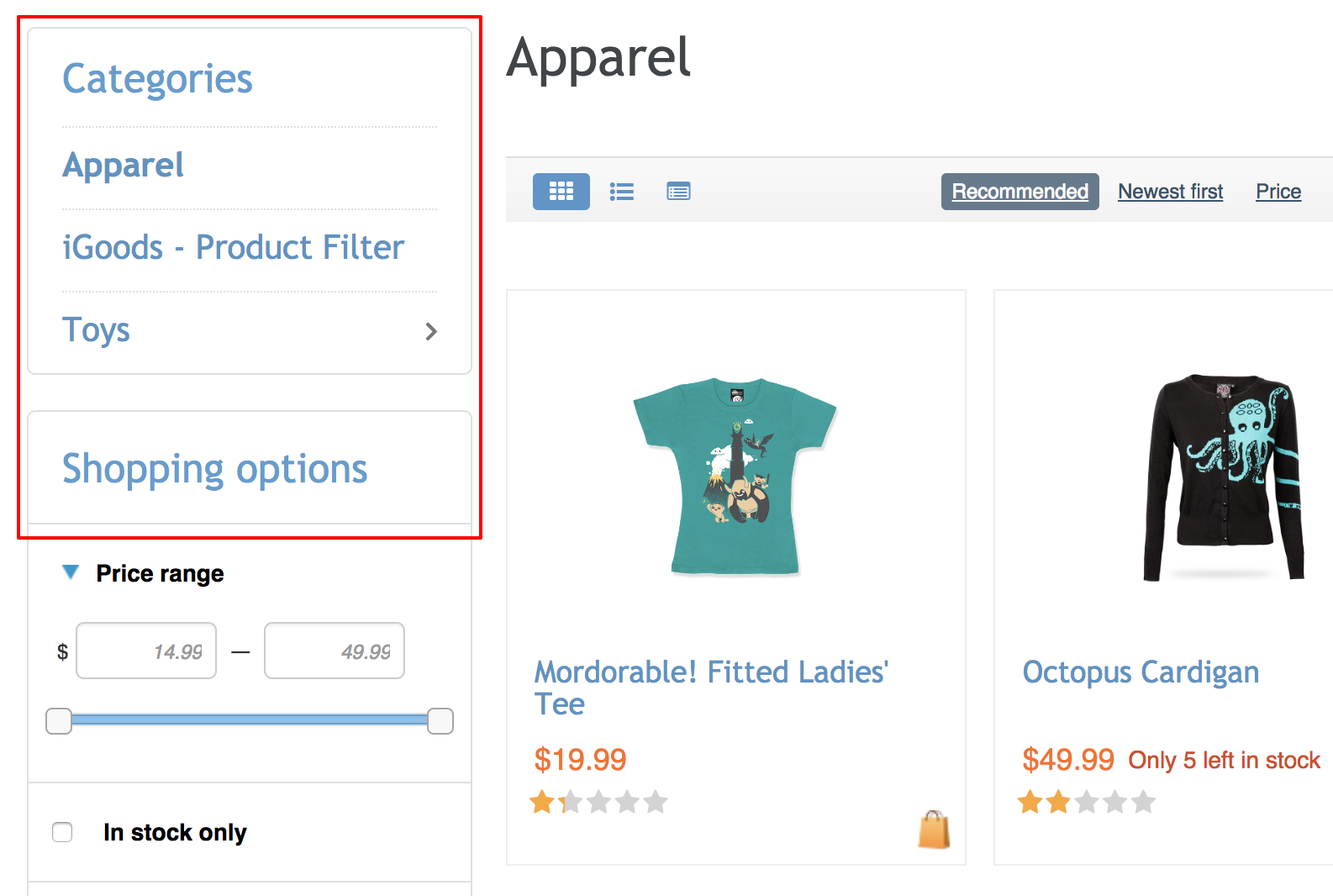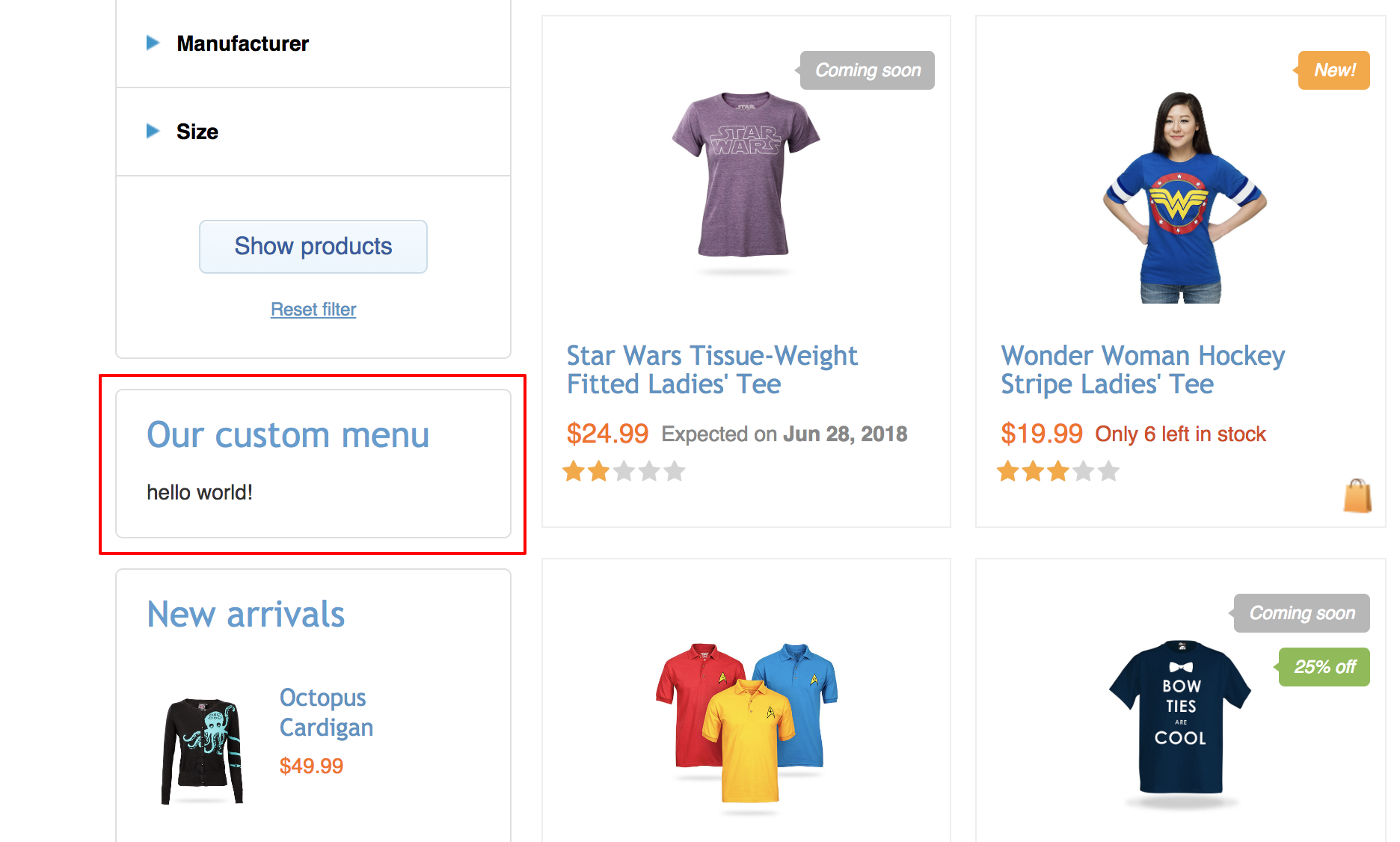Introduction
This article describes how to create your own sidebar menu in customer store-front. This is a menu similar to Categories, Shopping options or New Arrivals ones you can see in default X-Cart:

Implementation
We start off with creating an empty module with developer ID XCExample and module ID CustomerMenu. Of course, your developer and module IDs can be different.
After that we create a viewer class that will be responsible for this menu box. We create classes/XLite/Module/XCExample/CustomerMenu/View/SidebarMenu.php file with the following content:
<?php
namespace XLite\Module\XCExample\CustomerMenu\View;
/**
* @ListChild (list="sidebar.single", zone="customer", weight="500")
* @ListChild (list="sidebar.first", zone="customer", weight="500")
*/
class SidebarMenu extends \XLite\View\SideBarBox
{
protected function getHead()
{
return 'Our custom menu';
}
protected function getDir()
{
return 'modules/XCExample/CustomerMenu/menu';
}
}
Let us walk through each line of this code:
namespace XLite\Module\XCExample\CustomerMenu\View;defines a namespace of the class and you must use your own developer and module IDs here. We used XCExample and CustomerMenu, because they are IDs of our module.- Construction
@ListChild (list="sidebar.first", zone="customer", weight="500")is used to assign the sidebar box into the area where all other sidebar boxes are located. You can change its weight to move it up or down in the left-hand side menu. This section must start with/**and end with*/characters. class MySidebar extends \XLite\View\SideBarBoxtells that we are going to use typical sidebar box as a template for our own menu.- Method
getHead() defines the header of the menu. - Method
getDir() defines the folder where the template that defines the look of the sidebar menu (body.twig) is located. In our case, this folder isskins/customer/modules/XCExample/CustomerMenu/menu/. Again, you must use your own developer and module IDs in this path.
Finally, we create the template skins/customer/modules/XCExample/CustomerMenu/menu/body.twig mentioned above. Its content will be what you want to display in the sidebar box, e.g.:
hello world!
If we open some category page now, we should see the following results there:

Module pack
You can download this module pack from here: XCExample-CustomerMenu-v5_3_0.tar